Model UN: The Basics What is the United

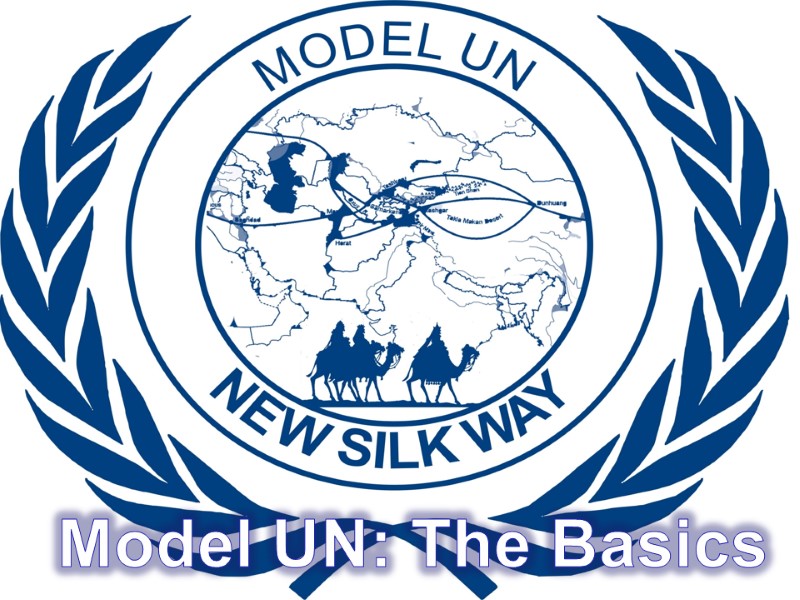
Model UN: The Basics
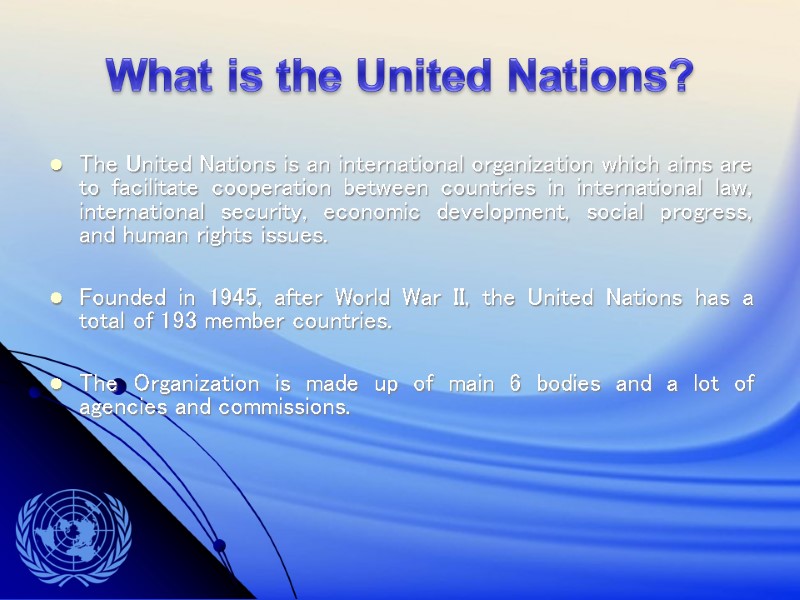
What is the United Nations? The United Nations is an international organization which aims are to facilitate cooperation between countries in international law, international security, economic development, social progress, and human rights issues. Founded in 1945, after World War II, the United Nations has a total of 193 member countries. The Organization is made up of main 6 bodies and a lot of agencies and commissions.
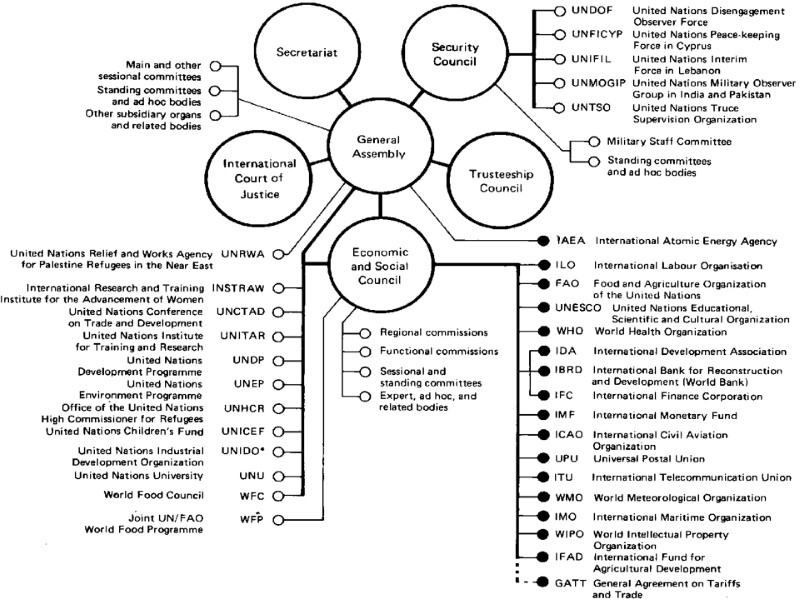
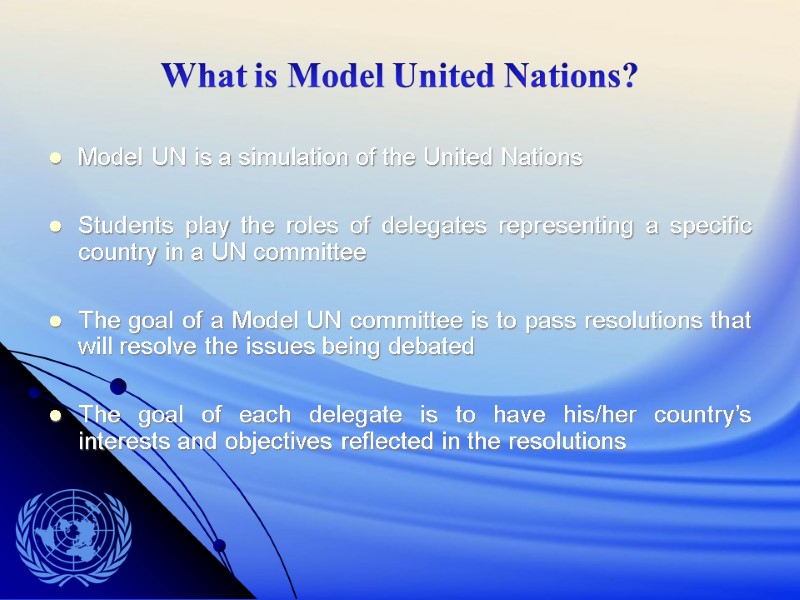
What is Model United Nations? Model UN is a simulation of the United Nations Students play the roles of delegates representing a specific country in a UN committee The goal of a Model UN committee is to pass resolutions that will resolve the issues being debated The goal of each delegate is to have his/her country’s interests and objectives reflected in the resolutions
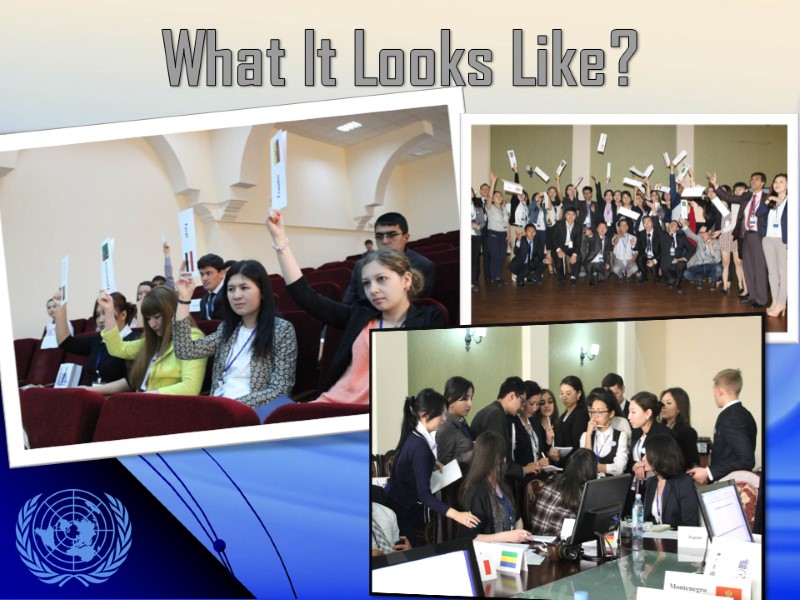
What It Looks Like?
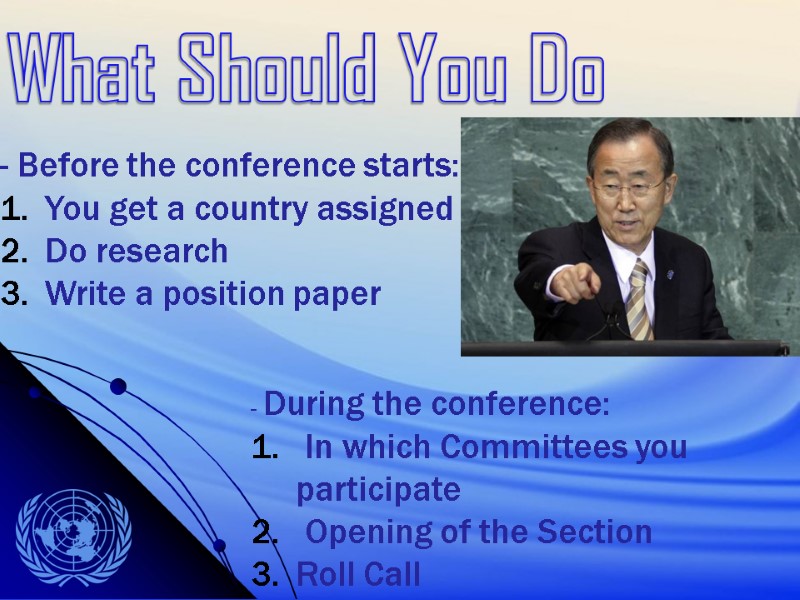
What Should You Do - Before the conference starts: You get a country assigned Do research Write a position paper - During the conference: In which Committees you participate Opening of the Section Roll Call

Important Model UN Procedural Vocabulary 1.Chairperson – moderator, the one who directs the conference - debate/discussion. – “Honourable Chair” – “Your Excellency Mr. President…” – Mr. Chair, Mr. Chairperson.
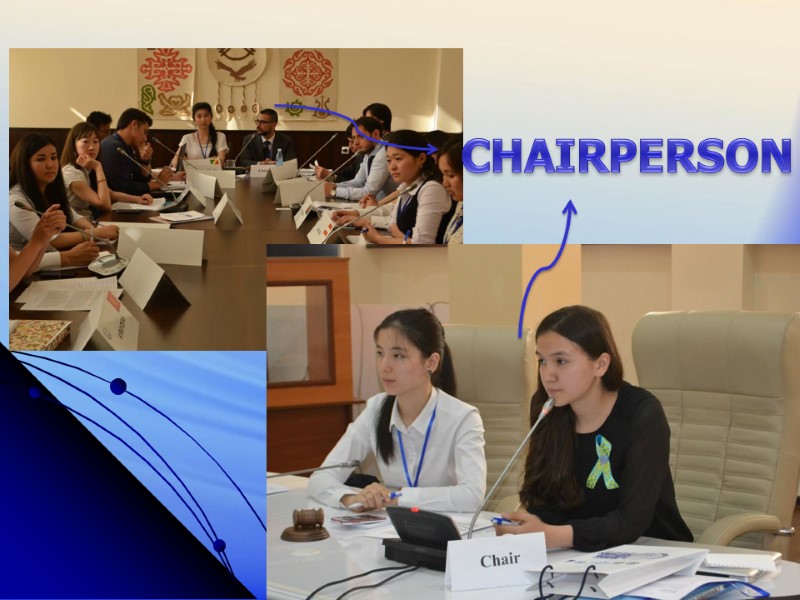
CHAIRPERSON
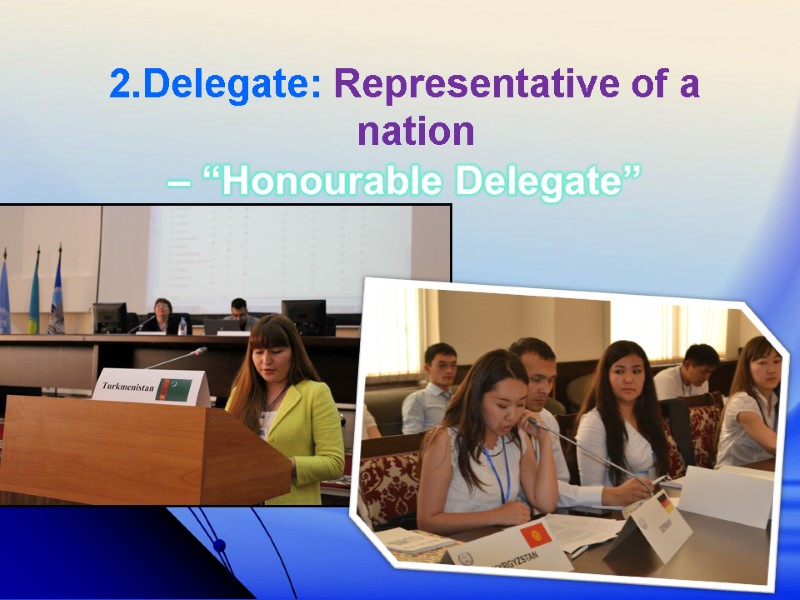
2.Delegate: Representative of a nation – “Honourable Delegate”
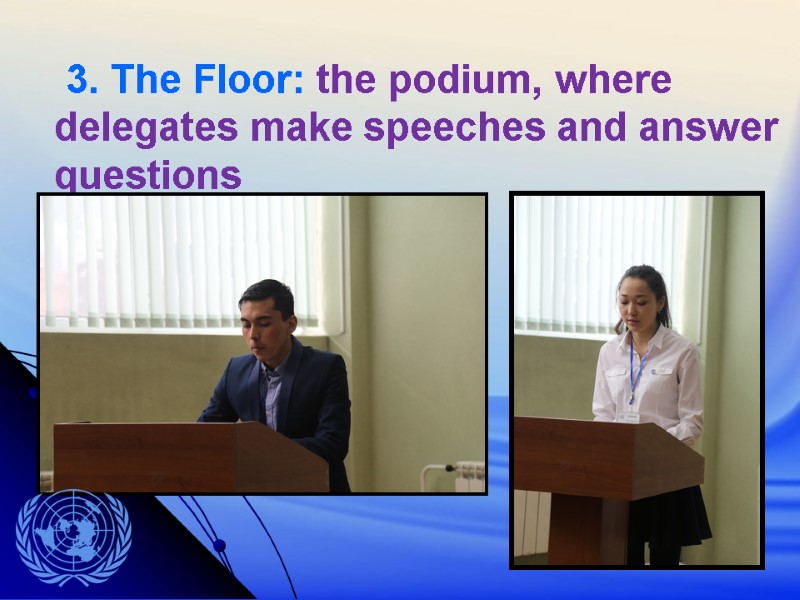
3. The Floor: the podium, where delegates make speeches and answer questions

Flow of debate Speakers List Moderated Caucus Unmoderated Caucus Return to Speakers List Voting Procedures Set the agenda
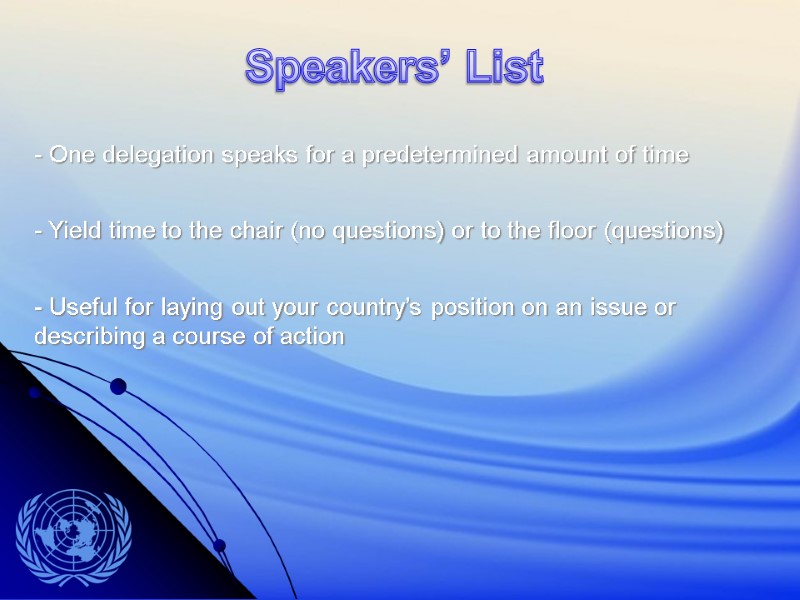
- One delegation speaks for a predetermined amount of time - Yield time to the chair (no questions) or to the floor (questions) - Useful for laying out your country’s position on an issue or describing a course of action Speakers’ List
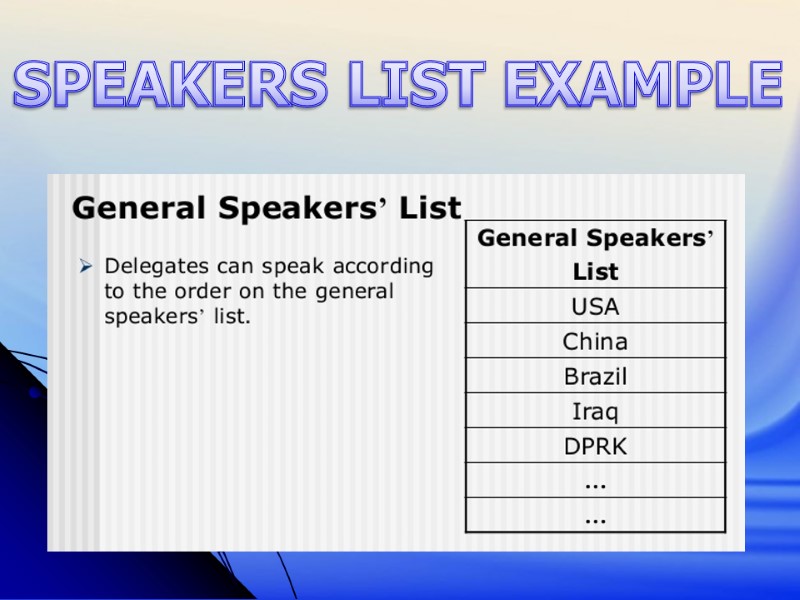
SPEAKERS LIST EXAMPLE
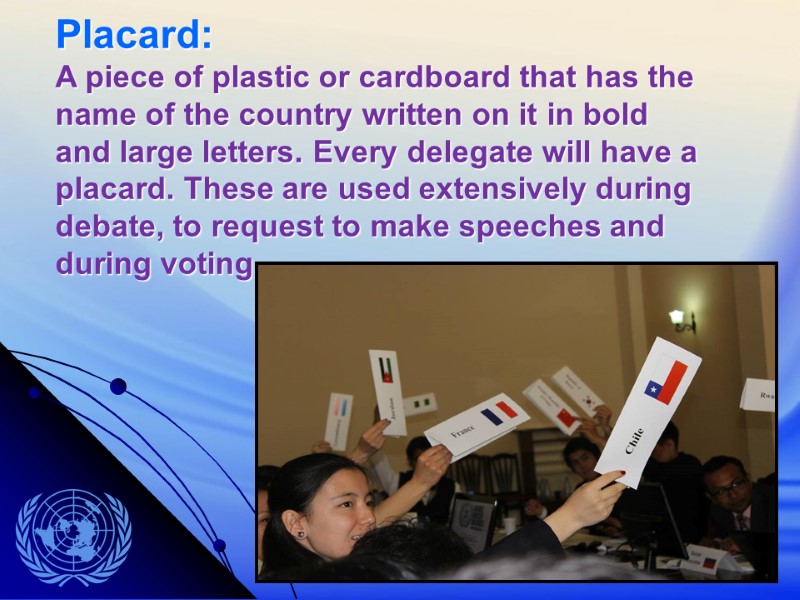
Placard: A piece of plastic or cardboard that has the name of the country written on it in bold and large letters. Every delegate will have a placard. These are used extensively during debate, to request to make speeches and during voting.
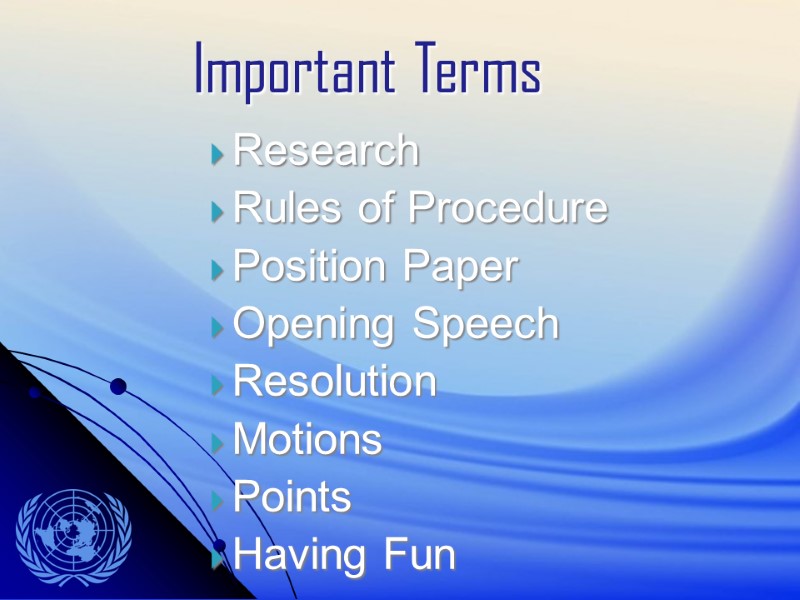
Important Terms Research Rules of Procedure Position Paper Opening Speech Resolution Motions Points Having Fun
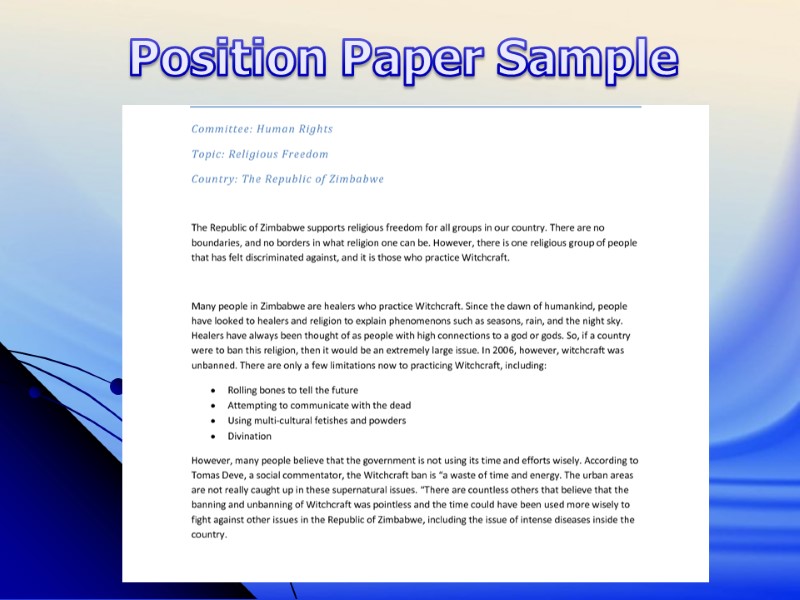
Position Paper Sample

Things to keep in mind while debating Always refer to your country in the third person Don’t say “I believe that ___.” Instead, say “The nation of China believes that ___,” Express the views of your country, not your own views Be formal and polite
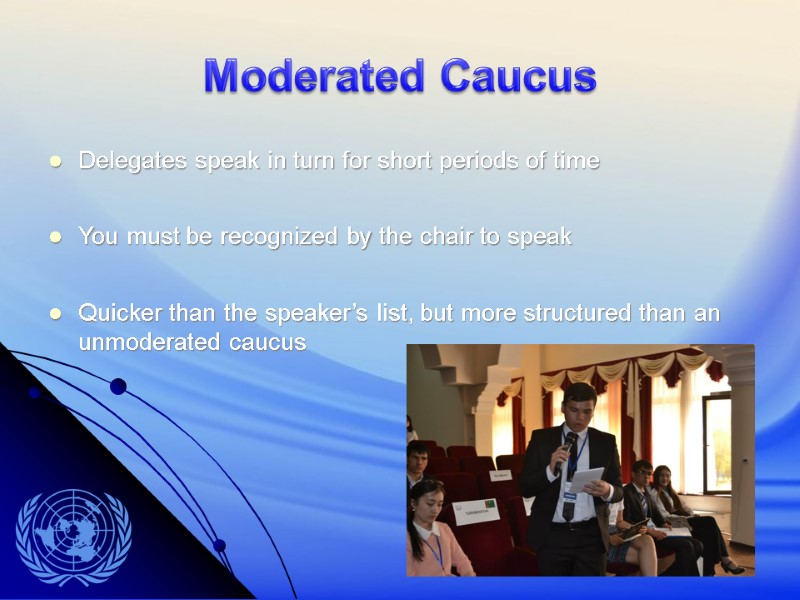
Moderated Caucus Delegates speak in turn for short periods of time You must be recognized by the chair to speak Quicker than the speaker’s list, but more structured than an unmoderated caucus
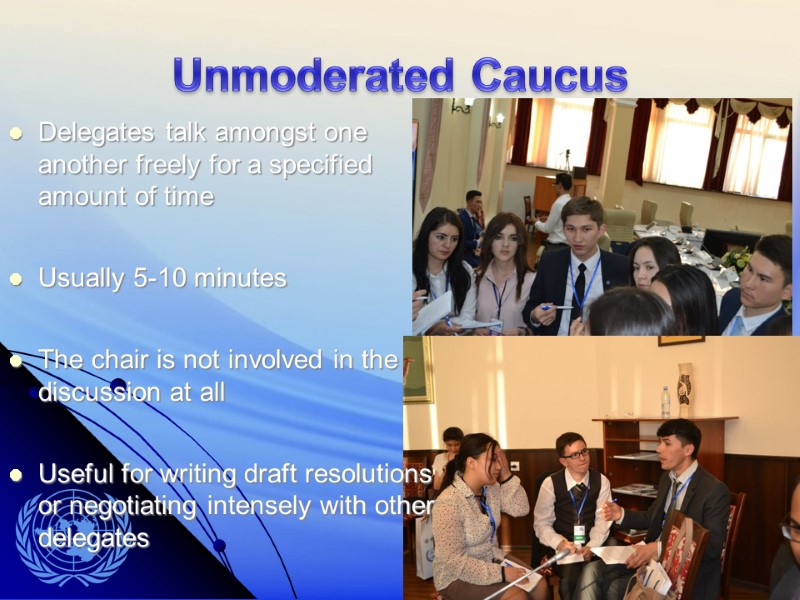
Unmoderated Caucus Delegates talk amongst one another freely for a specified amount of time Usually 5-10 minutes The chair is not involved in the discussion at all Useful for writing draft resolutions or negotiating intensely with other delegates
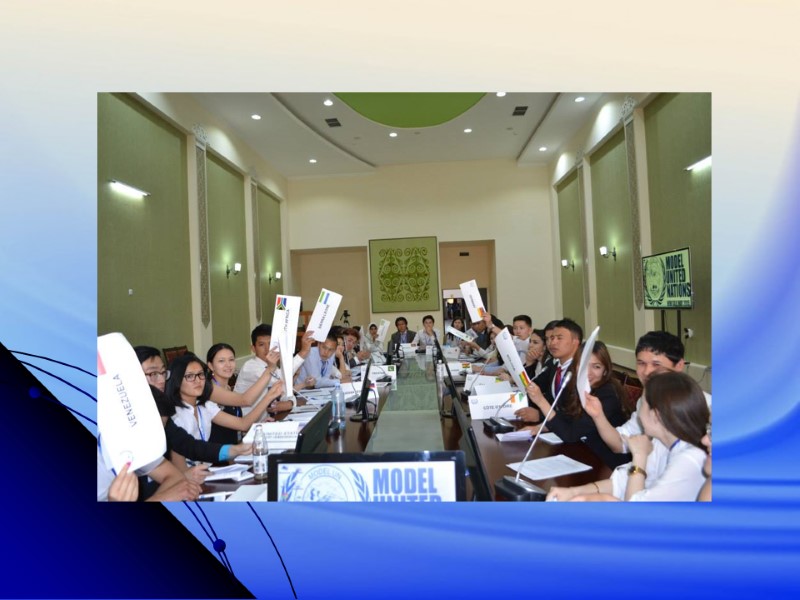
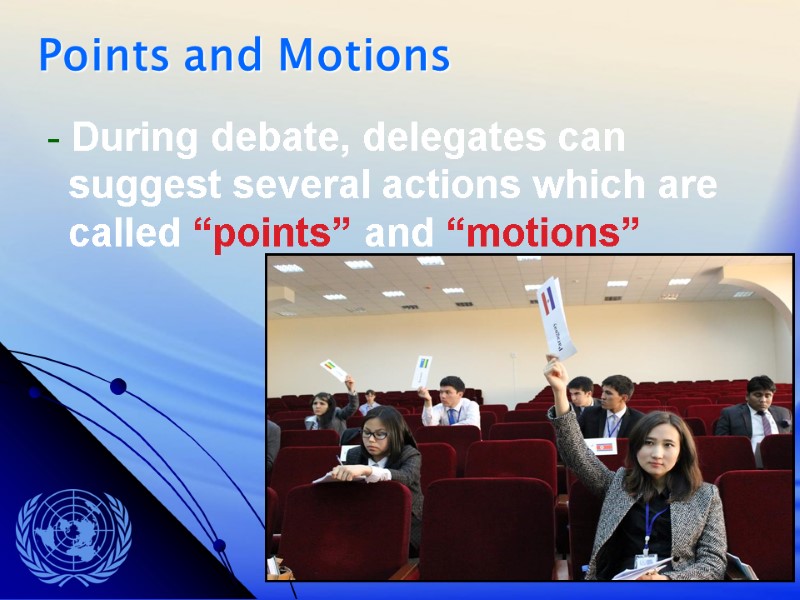
- During debate, delegates can suggest several actions which are called “points” and “motions” Points and Motions
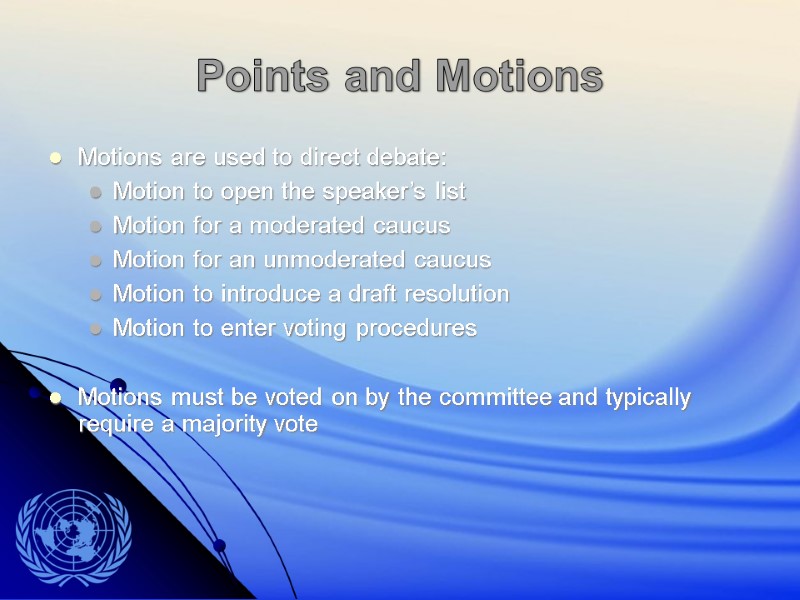
Points and Motions Motions are used to direct debate: Motion to open the speaker’s list Motion for a moderated caucus Motion for an unmoderated caucus Motion to introduce a draft resolution Motion to enter voting procedures Motions must be voted on by the committee and typically require a majority vote
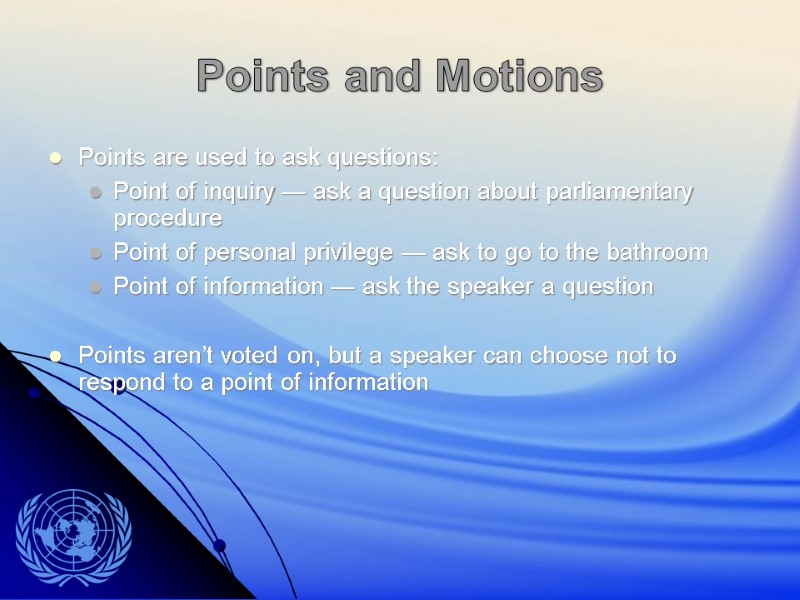
Points and Motions Points are used to ask questions: Point of inquiry — ask a question about parliamentary procedure Point of personal privilege — ask to go to the bathroom Point of information — ask the speaker a question Points aren’t voted on, but a speaker can choose not to respond to a point of information
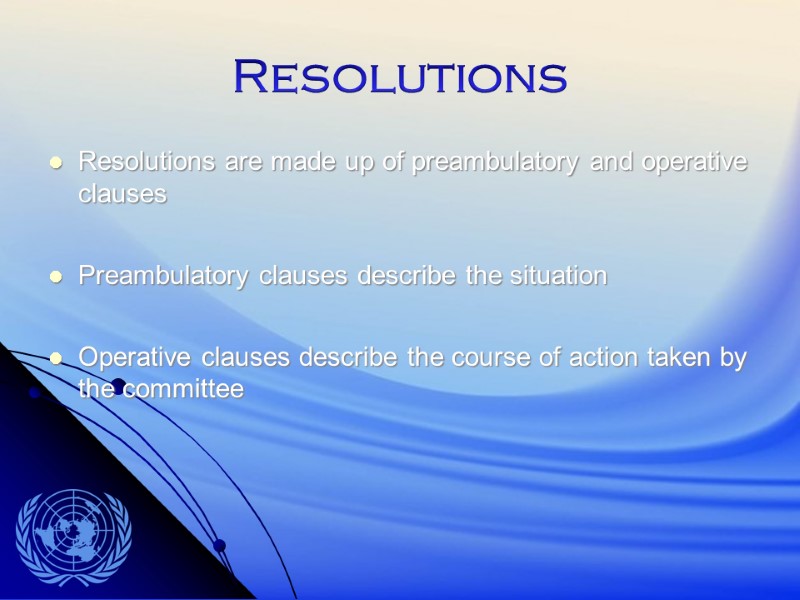
Resolutions Resolutions are made up of preambulatory and operative clauses Preambulatory clauses describe the situation Operative clauses describe the course of action taken by the committee
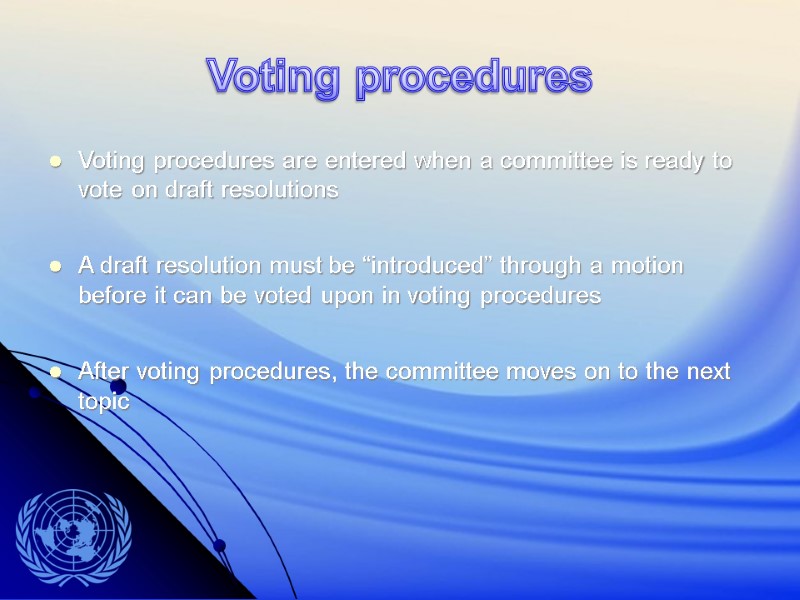
Voting procedures Voting procedures are entered when a committee is ready to vote on draft resolutions A draft resolution must be “introduced” through a motion before it can be voted upon in voting procedures After voting procedures, the committee moves on to the next topic
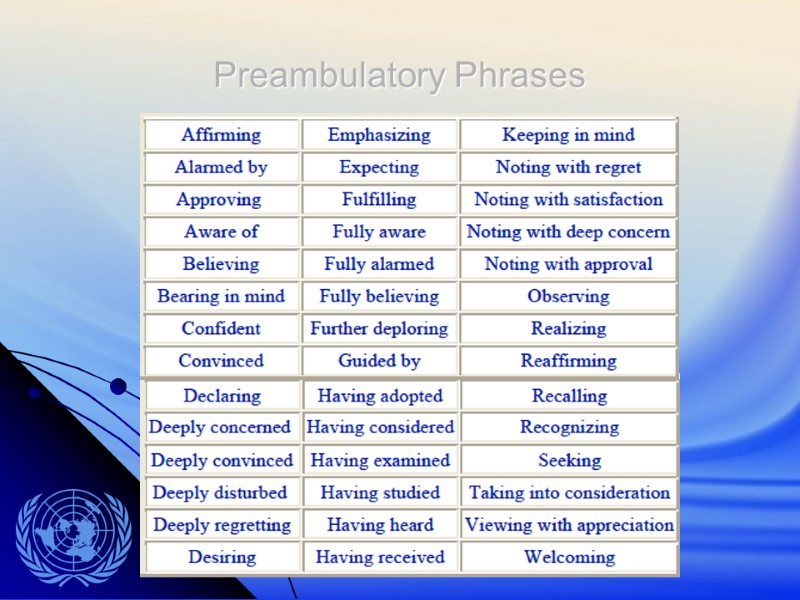
Preambulatory Phrases
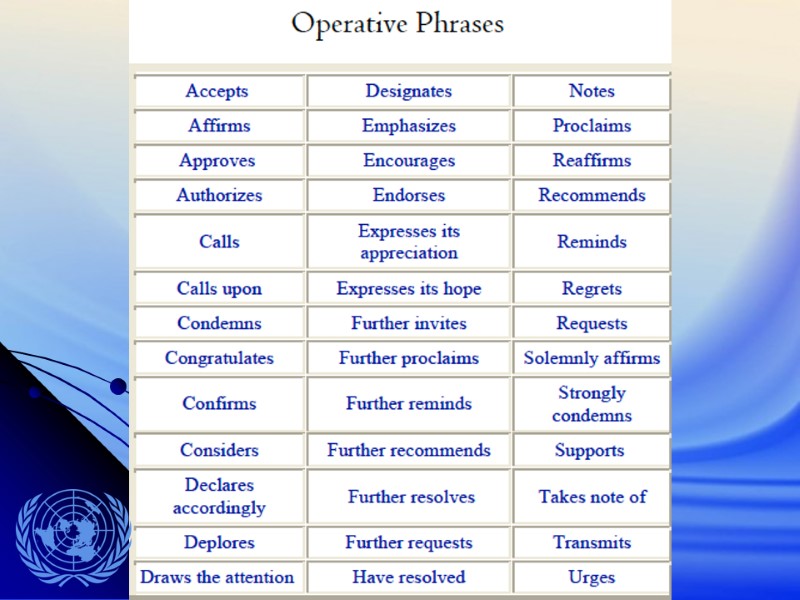
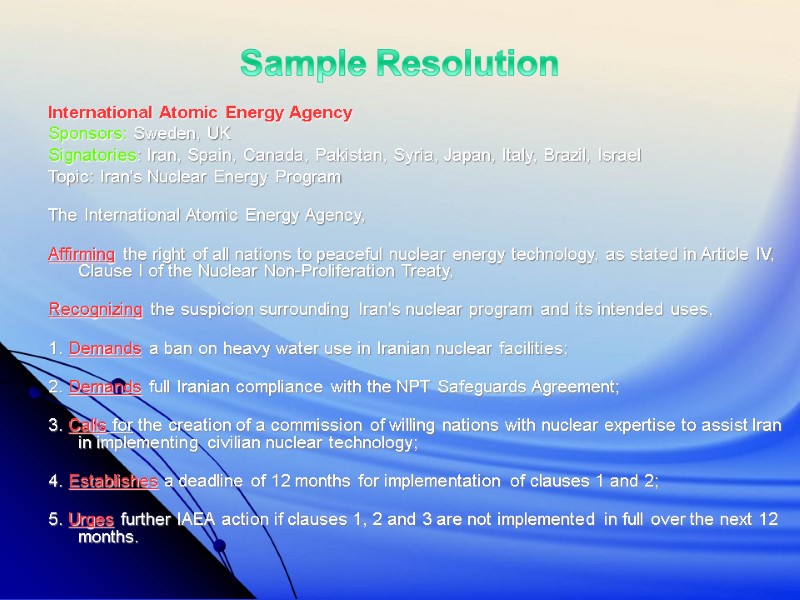
Sample Resolution International Atomic Energy Agency Sponsors: Sweden, UK Signatories: Iran, Spain, Canada, Pakistan, Syria, Japan, Italy, Brazil, Israel Topic: Iran's Nuclear Energy Program The International Atomic Energy Agency, Affirming the right of all nations to peaceful nuclear energy technology, as stated in Article IV, Clause I of the Nuclear Non-Proliferation Treaty, Recognizing the suspicion surrounding Iran's nuclear program and its intended uses, 1. Demands a ban on heavy water use in Iranian nuclear facilities; 2. Demands full Iranian compliance with the NPT Safeguards Agreement; 3. Calls for the creation of a commission of willing nations with nuclear expertise to assist Iran in implementing civilian nuclear technology; 4. Establishes a deadline of 12 months for implementation of clauses 1 and 2; 5. Urges further IAEA action if clauses 1, 2 and 3 are not implemented in full over the next 12 months.
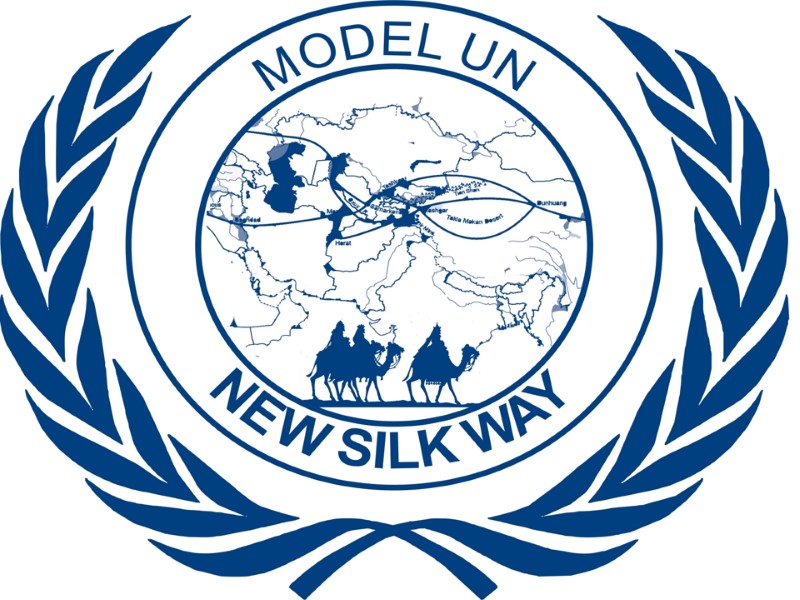
16324-model_un_-_the_basics.ppt
- Количество слайдов: 29

